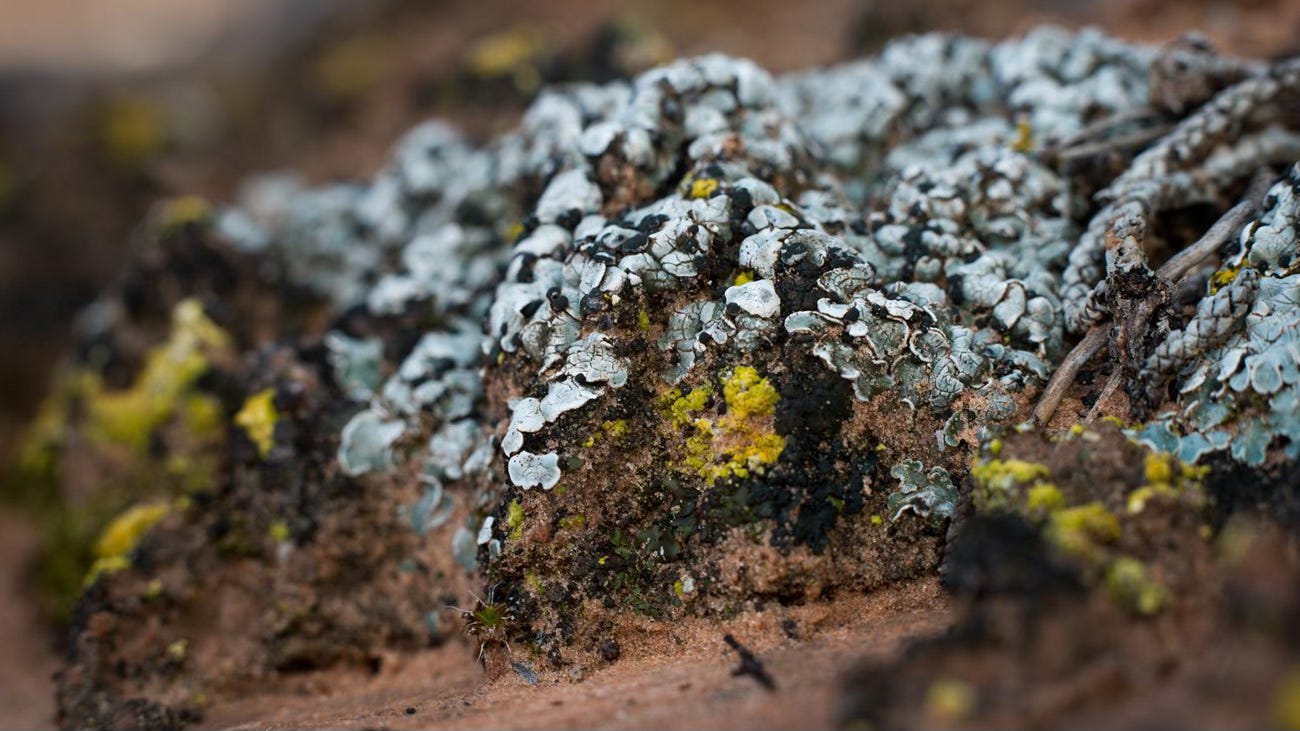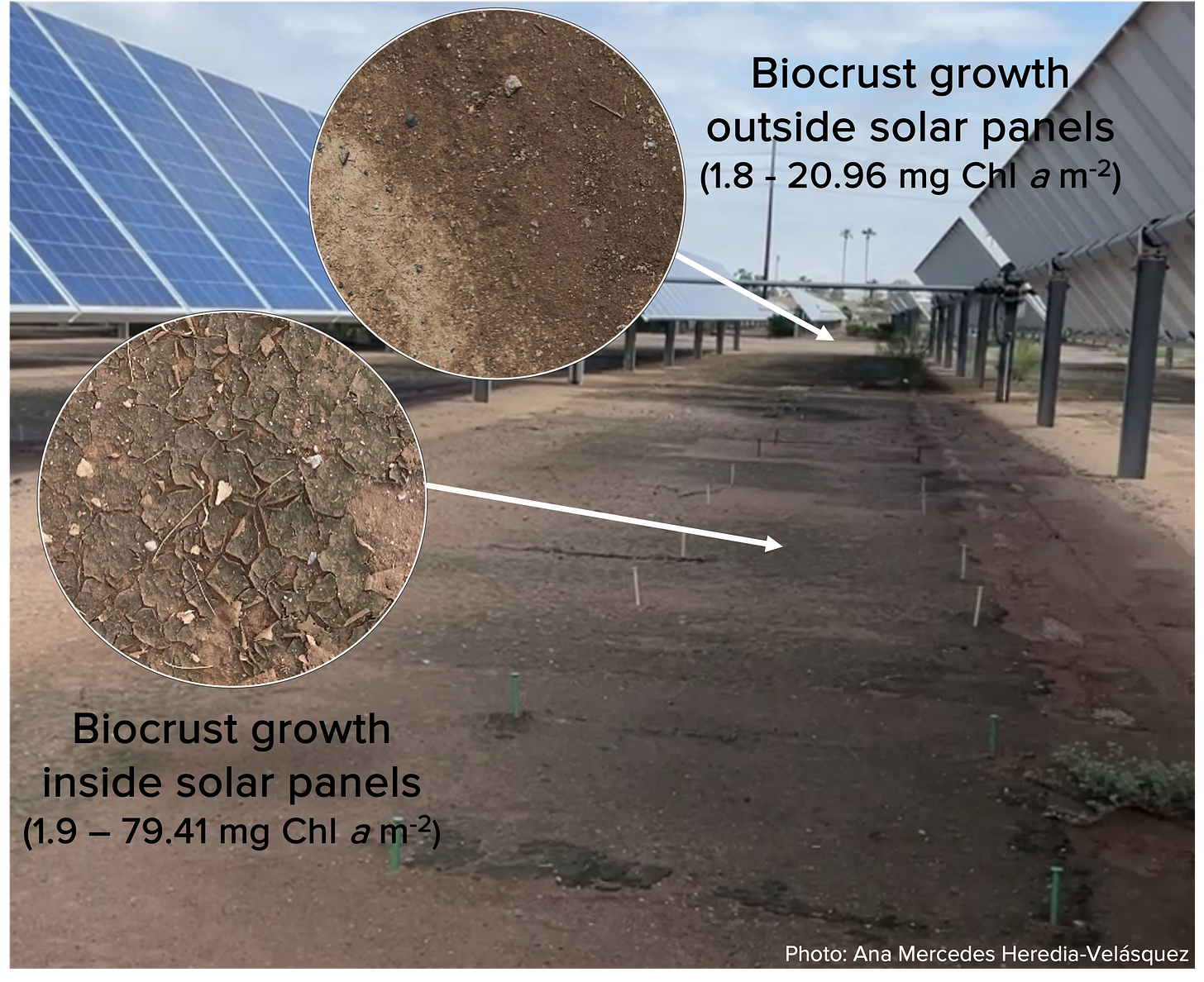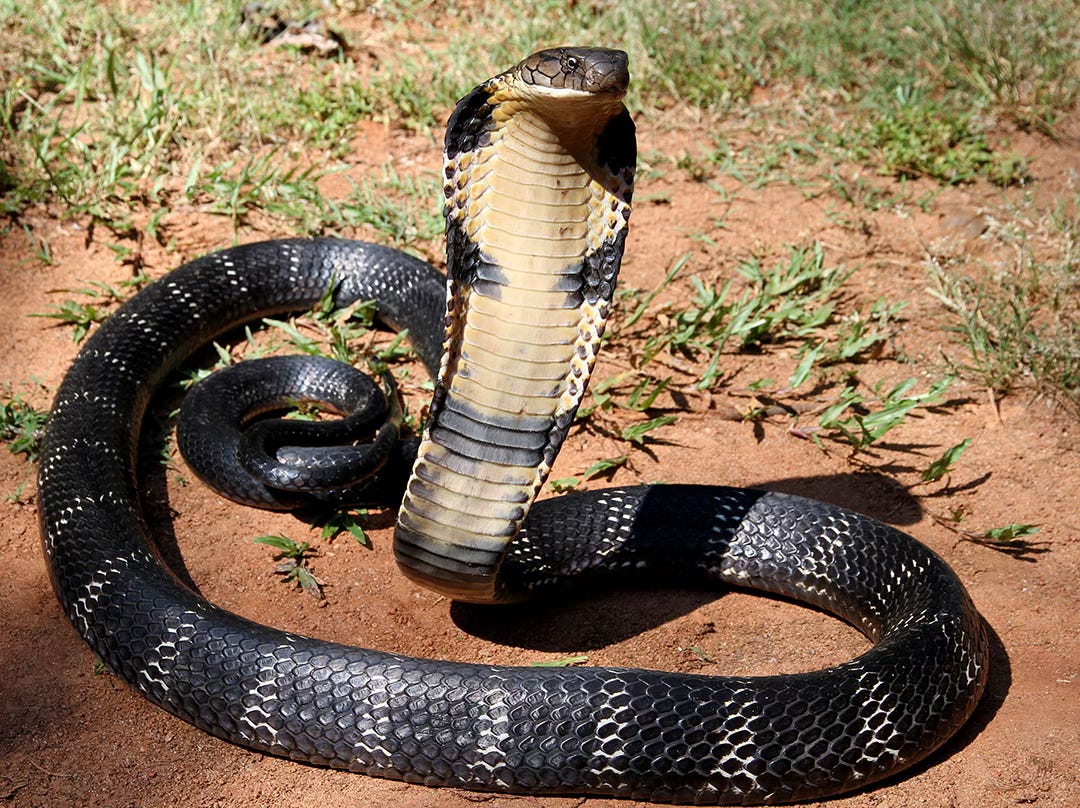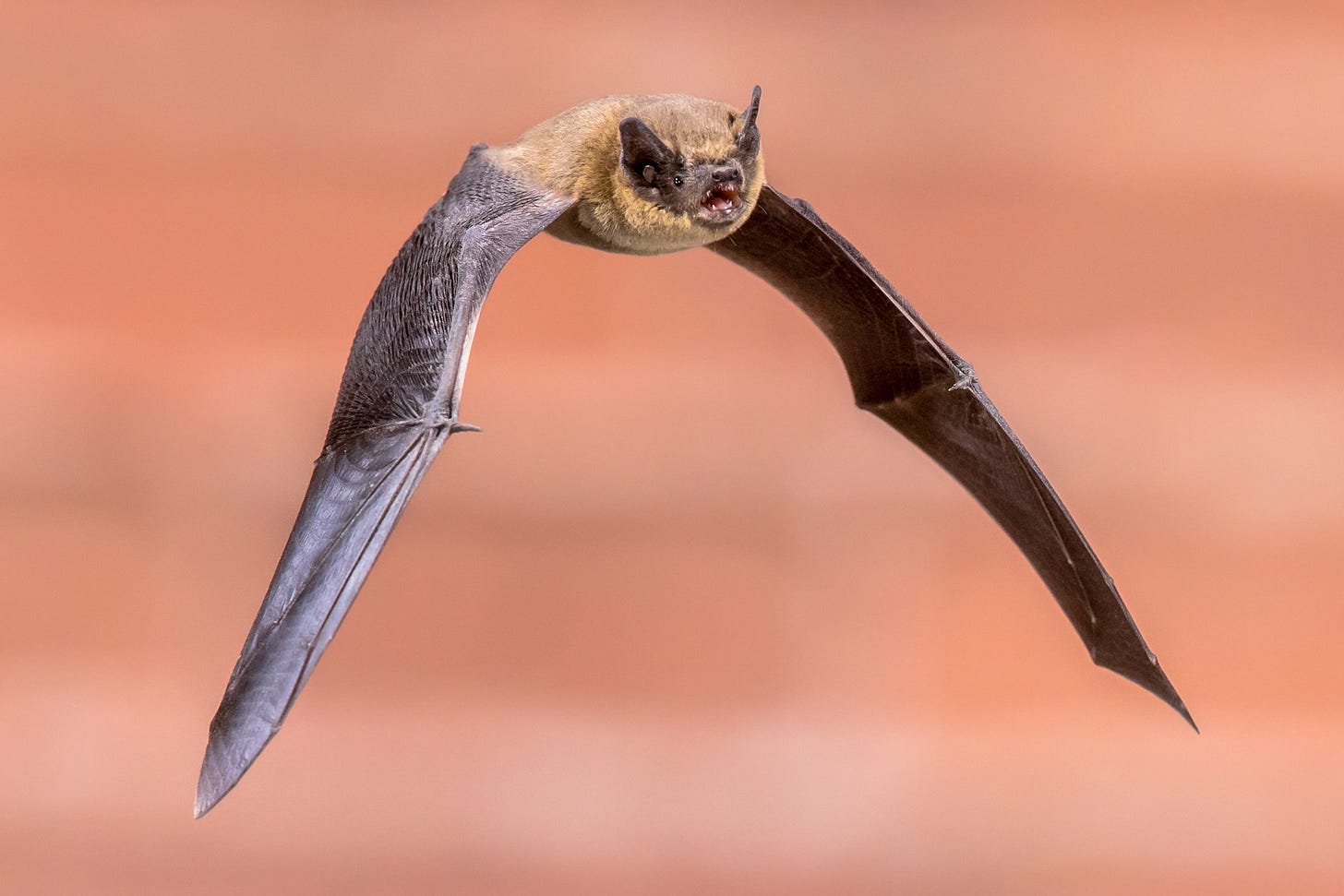The soil that takes 1,000 years to forgive
Plus, solving the mystery of why bats don't get cancer
By Dan Fletcher
Here is today’s audio edition!
I spent last week entirely without service, on a raft trip through the ancient landscapes of Dinosaur National Monument, trying my best not to step on what looked like patches of blackened, crusty dirt scattered between the sage and brush. Our guides constantly reminded us to stay on trails and avoid the "crypto" — not a warning about the perils of bitcoin, but a reminder to respect one of the tiniest organisms that calls the desert home.
After a few days of carefully sidestepping these dark patches, I started to wonder: what exactly was I protecting? And why did something that looked like burnt toast warrant such zealous protection?
It turns out I was walking through one of conservation's most patient success stories — and one of its most fragile. Those unremarkable patches of blackened soil represent some of Earth's most persistent ecosystem engineers, microscopic communities that can take up to 1,000 years to fully recover from a single boot print.
During my hikes through Dinosaur, I kept thinking about those timeframes. While I planned my visit in weeks and experienced the landscape in hours, the communities beneath my feet were operating on scales that span centuries and millennia. Every step carried consequences that would outlast not just my visit, but potentially my entire lifetime.
At Dinosaur, this living soil covers more than 70% of the ground between plants, quietly orchestrating desert life in ways that most visitors never notice. Understanding these cryptobiotic communities reveals how conservation often hinges on the smallest, most overlooked organisms — and how your footsteps in the desert carry consequences measured not in moments, but in centuries.
The crust is built by cyanobacteria, lichens, mosses, and tiny fungi that bind soil particles with sticky filaments, creating a foundation that determines which plants can grow, where animals can thrive, and whether the ecosystem stays put during windstorms. These organisms have mastered suspended animation — dried samples have survived over a century in laboratory storage, ready to spring back to life with the first drops of moisture.
While these communities can begin photosynthesis within 30 minutes of rainfall, they operate on geological timescales that make old-growth forests seem rushed. Cyanobacteria can start colonizing disturbed soil within months, but fully developed crusts require 20-100 years under favorable conditions. In harsh environments, complete recovery can take up to 1,000 years. In extreme cases, scientists have documented recovery times of nearly 4,000 years.
This incredible patience comes with an equally incredible vulnerability. Even gentle foot traffic can shatter the delicate networks that took decades to build, exposing loose soil to wind and water erosion that can undo generations of slow, patient growth.
What makes this especially important for wildlife is that these soil communities function as hidden ecosystem engineers whose influence extends far into complex food webs. Desert geckos and lizards show strong preferences for areas with developed soil crust — studies find that 80-94% of their burrows are dug in crusted areas. The crust creates optimal conditions by moderating soil temperatures and supporting plants with dramatically higher concentrations of essential nutrients.
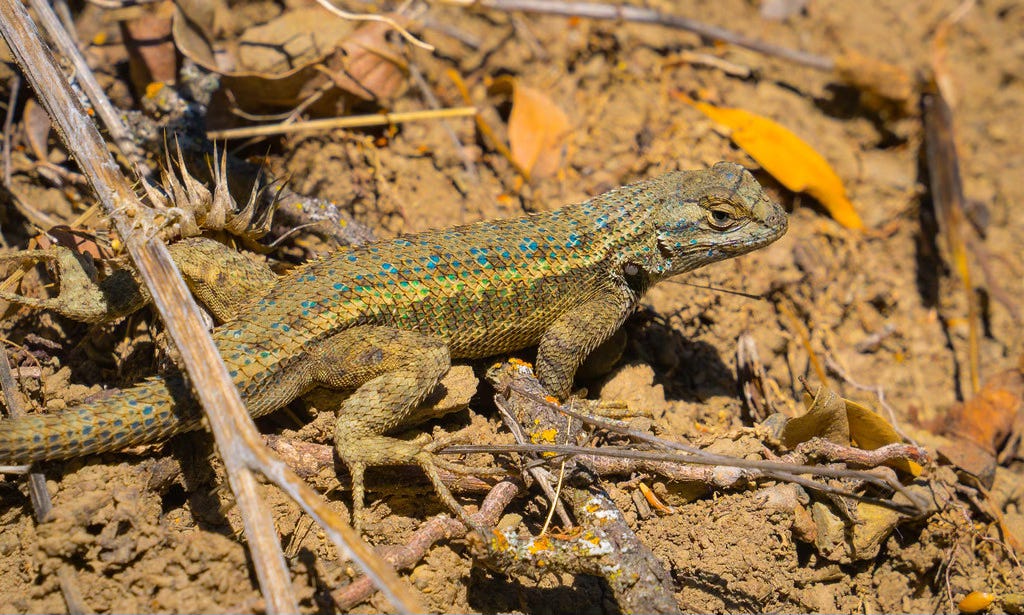
Plants growing in crusted areas are essentially vitamin-packed, containing more nitrogen, phosphorus, and other minerals that cascade up the food chain. Meanwhile, mature crusts support thriving communities of tiny invertebrates — one Mexican desert study documented over 4,600 microarthropods representing 40 different species in crusted soils. These microscopic communities form the foundation for desert biodiversity that remains invisible to most visitors.
But climate change poses a particularly cruel threat to these ancient communities. The very organisms that help stabilize desert soils are among the most vulnerable to changing precipitation patterns and rising temperatures. These communities need stored carbon reserves to reactivate after dry periods, and insufficient moisture can gradually deplete these reserves until entire communities die. As climate change brings more frequent drought and extreme weather, many crust communities are being pushed beyond their remarkable resilience.
The scale of this conservation challenge is huge. Biological soil crusts cover 12% of Earth's terrestrial surface — an area larger than the continental United States. They provide nearly half of the nitrogen that plants need to grow across the world's land surfaces and help prevent desertification across 44% of the world's cultivated systems.
Yet some cool new solutions are emerging. Arizona State University recently discovered that solar panel installations can function as biocrust nurseries — the panels create greenhouse-like conditions that double biomass and triple cover compared to open areas. This "crustivoltaics" approach proves 10,000 times more cost-effective than traditional restoration methods, suggesting renewable energy development could actually aid desert ecosystem recovery. You wouldn't want solar panels dotting Dinosaur National Monument, but for less protected desert areas, it's a heartening solution.
Scientists have also created the world's first "biocrust farm" in Utah, where they cultivate entire communities for transplantation to degraded sites. These efforts represent a new frontier in ecosystem restoration, recognizing that saving desert wildlife requires protecting the invisible communities beneath their feet.
The story of cryptobiotic soil crust changes how we think about desert conservation — from protecting individual species to safeguarding the microscopic communities that make larger life possible. As climate change accelerates, the fate of desert wildlife increasingly depends on our willingness to protect what we can't easily see.
The next time you visit a desert landscape, remember you're walking through one of Earth's most patient ecosystems, where every step matters for centuries to come.
Quick links! 🔗
The trek to Everest just got a little spicier. Scientists discovered 10 king cobras at elevations up to 9,000 feet near Mount Everest — a shocking find since these tropical snakes typically stick to hot, lowland jungles. The world's longest venomous snakes were rescued from four locations in Nepal's Everest region, raising questions about whether rising temperatures are pushing them into cooler, higher altitudes where they've never been found before. Nepal's mountains are warming faster than its lowlands, with temperatures rising 0.05°C annually, potentially making previously uninhabitable elevations survivable for heat-loving species. While some researchers urge caution about directly linking the discovery to climate change, the pattern suggests we may be witnessing real-time shifts in wildlife distribution as the planet warms.
Scientists finally cracked the mystery of why bats almost never get cancer despite living far longer than their tiny size should allow — some species clock 35 years in the wild, equivalent to 180 human years. University of Rochester researchers discovered that little brown bats carry two working copies of the crucial p53 tumor suppressor gene (humans have just one), plus telomeres that barely shorten with age, allowing endless tissue regeneration. The real trick is balance: when their supercharged cell division threatens to turn cancerous, that extra p53 immediately orders rogue cells to self-destruct. Combined with immune systems that fight disease efficiently without causing chronic inflammation, bats have essentially evolved a three-part cancer prevention system that could inspire new human therapies targeting both aging and malignancy.





